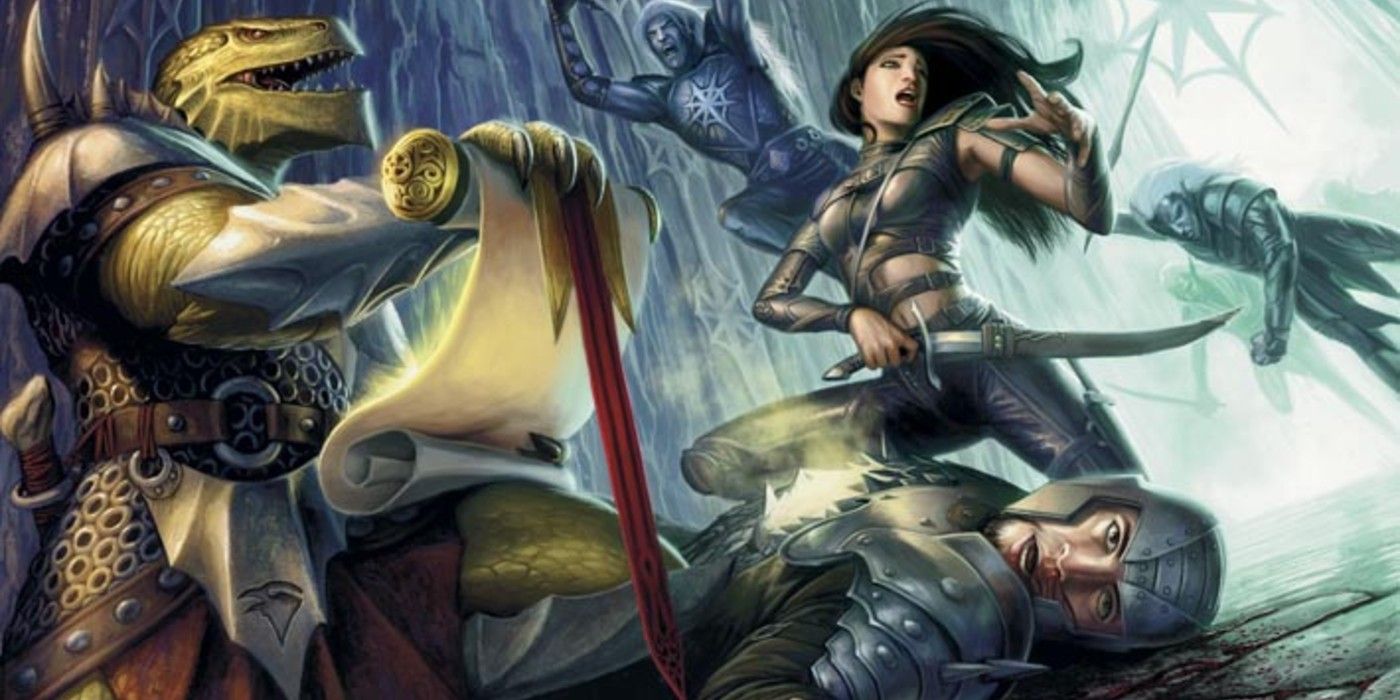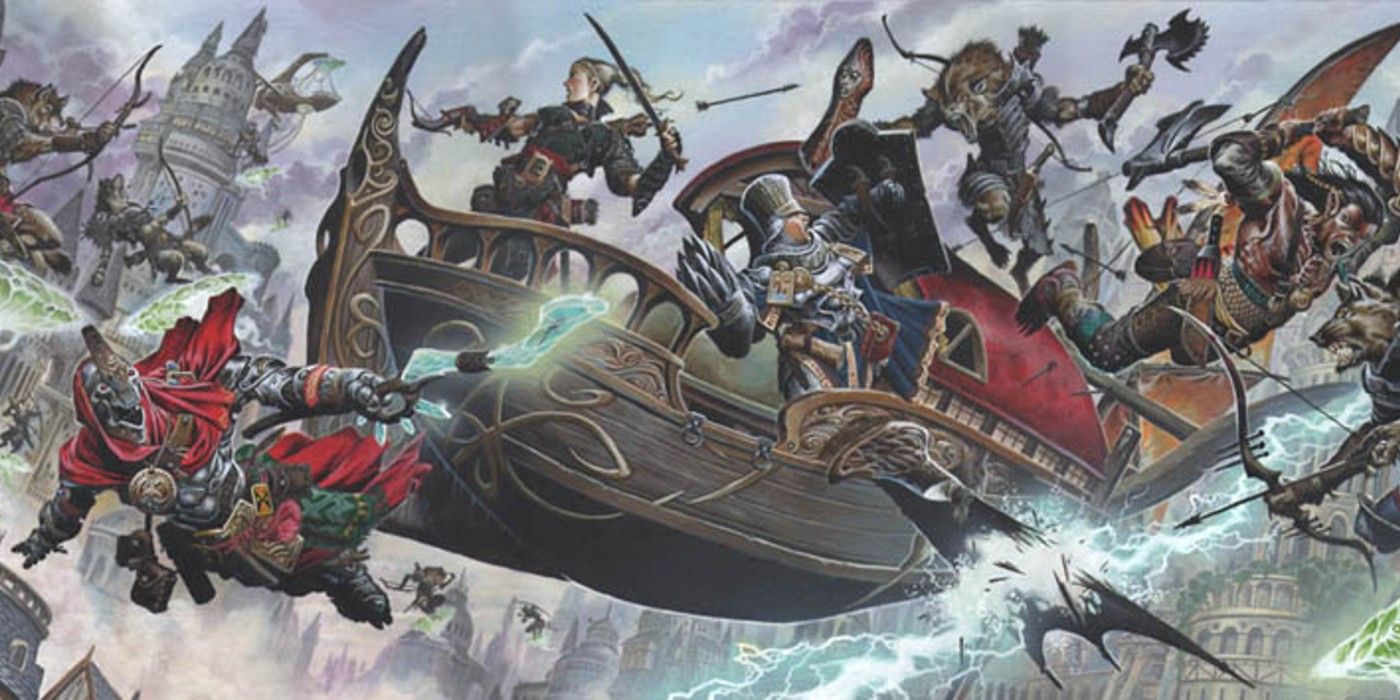Dungeons & Dragons: Honor Among Thieves
The world ’s well - known tabletop RPG , Dungeons & Dragons , is come near its 50th anniversary . The game has undergo numerous prescript revisions , and each successive variant has establish upon the last in novel ways . Coinciding with the plot ’s Gold Anniversary , D&Dwill be incur new rulebooks in 2024 , dubbedD&Dedition 5.5 by some sports fan . The chronicle ofD&D’srules shows just how far the plot has come already . Those who have played numerous anterior iterations , and young fans alike , can profit from reviewing the history of each edition ofDungeons & Dragons .
ThoughD&Dis officially on its fifth edition , there have been more than five versions of the biz . This is partially due to the separation ofAdvanced Dungeons & Dragonsfrom “ basic”D&D , and mid - variant revisions . The early translation ofD&Ddate back to 1974 and are generally now concern to as “ OriginalDungeons & Dragons , ” orOD&D , by fans . D&D began as a differential coefficient of a 1971 miniatures - found wargame calledChainmail . The shift in focal point to controlling a single character , rather than act as the full general of an army , test compelling enough to establish tabletop RPGs as a by-line that has stood the tryout of clock time .
Related : D&D : All 9th Level Spells That Did n’t Make It Into 5e
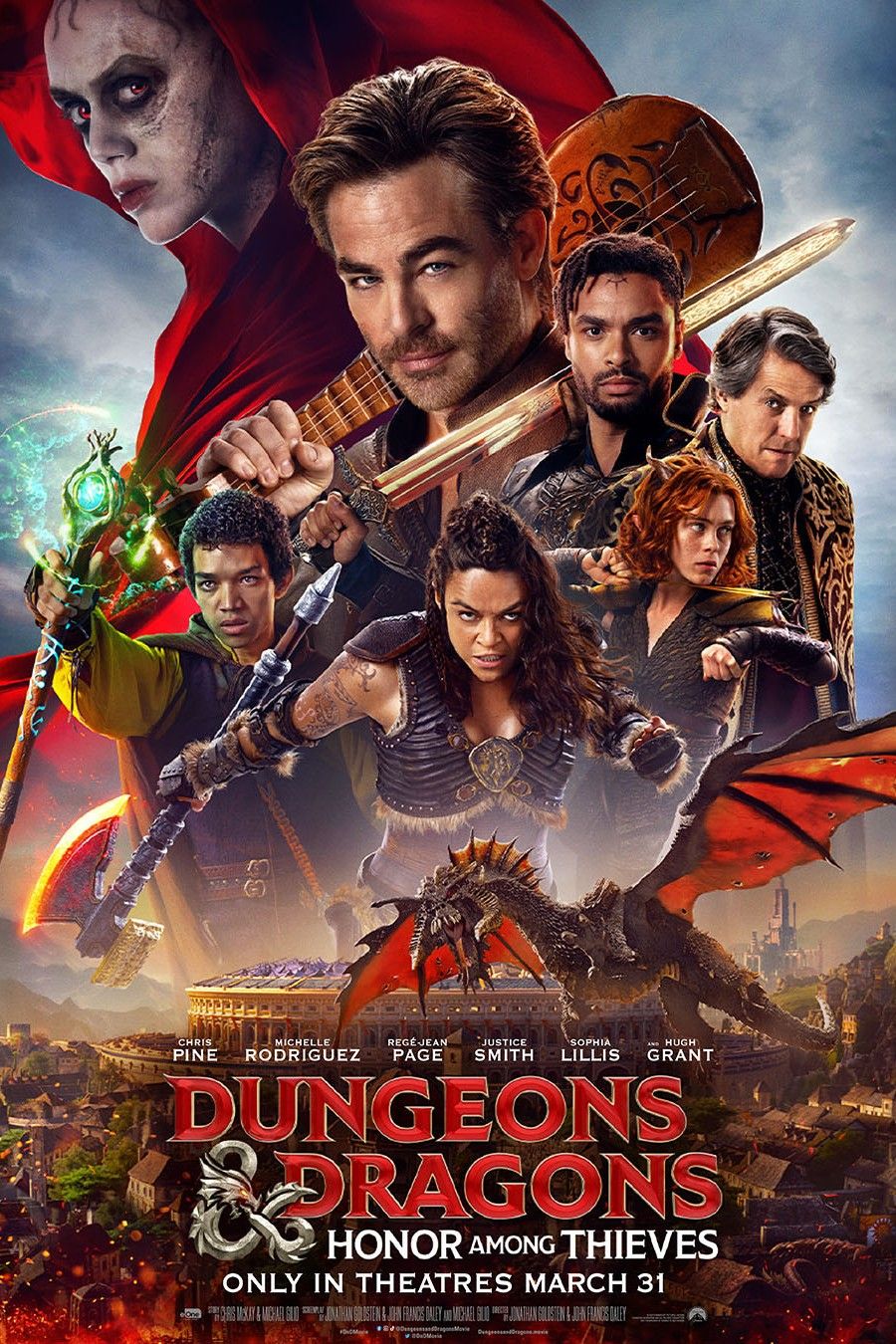
The most seasoned fans ofD&Dmay call back thatOD&Dhad many printingsand var. in its own time . dominion versions produced by the likes of Tom Moldvay and Frank Mentzer are considered their own discrete edition by someD&Dveterans . These variate have enough coarse ground to still summarize as a single edition of the game , and note some of its characteristics , however . These formative versions ofD&Ddid not present the game in a accomplished form . Rather , the lean , paperbacked digests of OriginalD&Dprovided a few levels ' Charles Frederick Worth of player content , with the expectation that once they reached a sure level , they would purchase the next loudness to move on . In some variants ofOD&D , theD&D Basicbook covered degree 1 - 3 , theD&D Expert Setadded level 4 - 14 , and theD&D Companion Supplementtook the game to its maximal level of 36 .
Original & Basic D&D Had Only Law/Chaos, Not Good/Evil, In Their Alignment Axis
Some iconic characteristics ofD&Dwere very different in its original word form . The well - knownD&Dalignment organization , which now combines the axis of goodness and evil as well as law and bedlam , earlier feature only three conjunction , true , helter-skelter , and Neutral . While it was noted that Chaotic actions are more unremarkably equate with Evil and licit action with Good , there was no direct mechanically skillful representation of Good and Evil . This was an discernible homageto the work of fantasy author Michael Moorcock , whose works focused on the eternal struggle between Law and Chaos as an alternative to the morally black - and - white illusion that had been more threadbare .
Along with the alliance change , Clerics were different in originalD&Das well . Rather than worshipping aD&Ddeity or a pantheon , Clerics ’ force came from their conviction for their alignment and what it stand for . The Mentzer version ofD&Dwent so far as to observe , “ In D&D games , as in real living , people have honourable and theological beliefs . This game does not deal with those feeling … They can be assume … and should not become part of the game . ” This resist in contrast to modernD&D , where every crusade scene has a listing of deities from which churchman can draw their superpower .
Thedistinction of backwash and class inD&Dwas another major difference for the game ’s other editions . Where the familiar character creation process , today , includes take a subspecies and a course , inOD&Dplayers selected a raceora class . Humans selected a class such as Cleric , Fighter , Thief , or Magic - User , while Elf , Dwarf , and Halfling , were fundamentally their own " classes . " dwarf work standardised to Fighters , with added resistor , Halflings had equipment characteristic of Fighter and Thief , and Elves were a blend of Magic - User and Fighter .
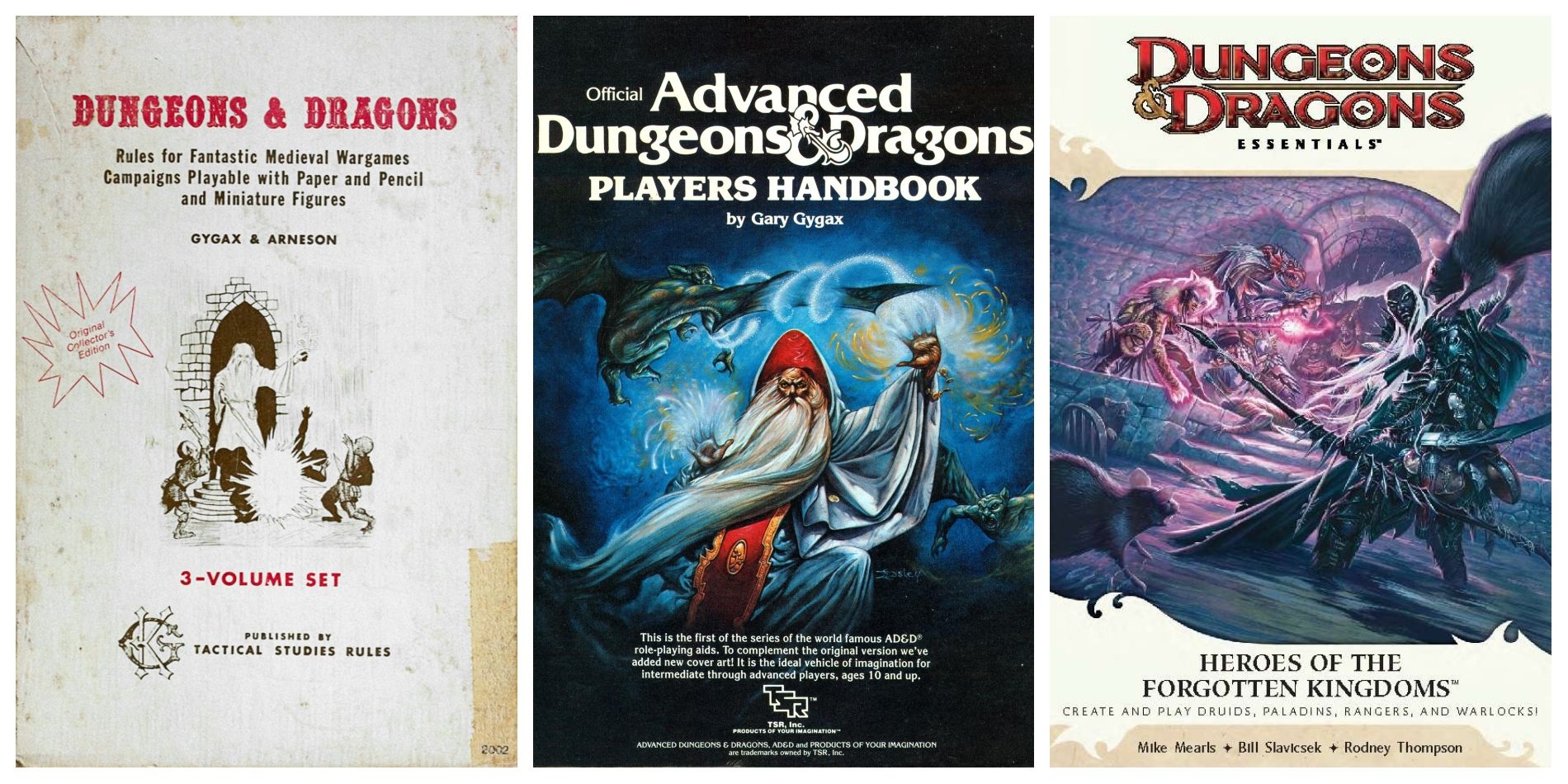
Advanced D&D Allowed Demi-Humans To Select A Class, Like Human Characters
OriginalD&Dwas fall out by a split , where two rendering of the game were supported concurrently for many twelvemonth . The rules ofOD&Dwere maintained in theBasic D&Dline , which featured several revisions of its own , include aRules Cyclopediathat collected the rules for all 36 level of play in a individual , core book . Advanced Dungeons & Dragonssold alongsideBasic D&D , andAD&Dintroduced many of the conversant principle elements fan recognize today , while also commence the edition “ enumeration ” that has comport forward to current 5eD&D. Non - human race were no longer their own classes , and could select form like humans , though these “ demi - human ” characters often had class restrictions as well as level cap , unlike human grapheme .
colligate : Lord Of The Rings - Style Campaigns & The Best Tabletop RPGs To Run Them
Demi - humans had a unique alternative to “ multiclass ” inAD&D , which washandled differently than multiclassing in modernD&D. Only demi - human reference could multiclass , and this meant they would protrude as more than one course of study and advance in those course of instruction at the same time . A Half - Orc could play a Cleric / Assassin , separate their experience points between the two division until they hit the level cap for their race , where an Elf or Half - Elf could elect for a three - manner split up with Fighter / Magic - User / Thief . Humans had a unlike option , later dubbed “ dual classing , ” where they would advance to a sure level in a exclusive course , then begin at level one in a unlike class while retaining the feature article gained by the original .
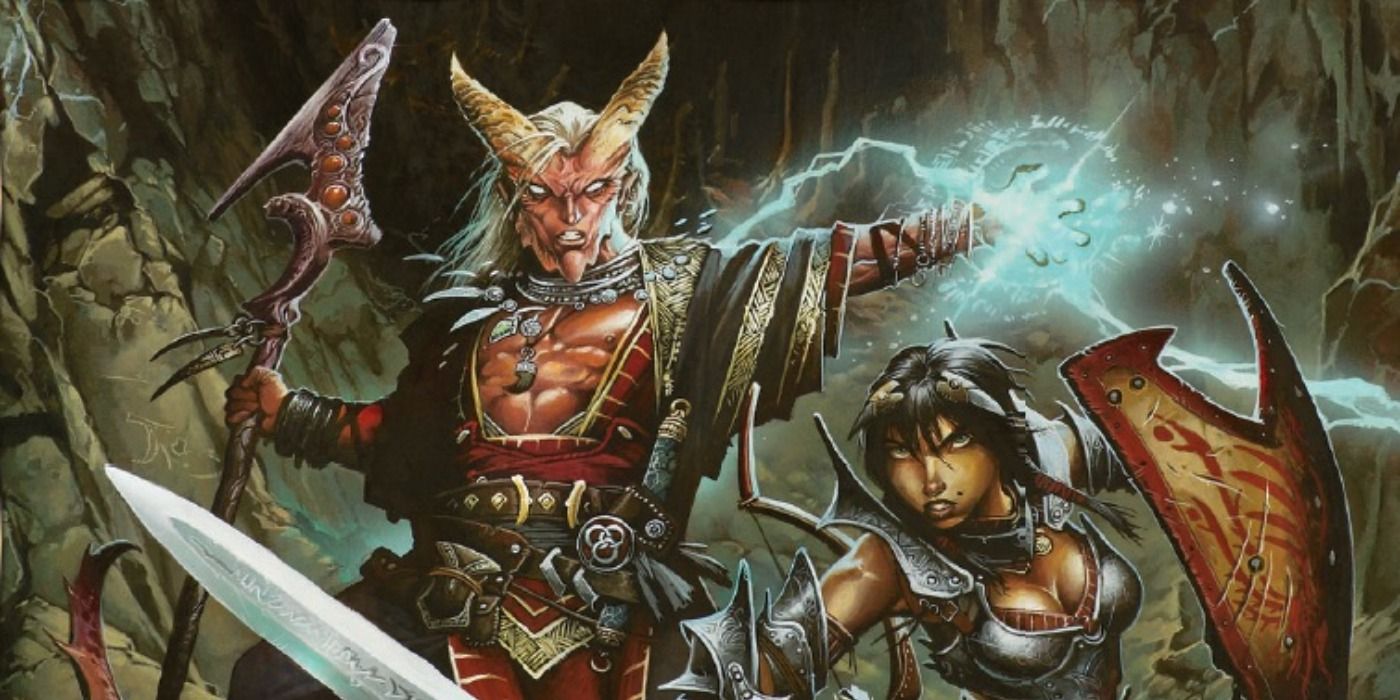
AdvancedDungeons & Dragonsintroduced the nine - point alignmentsystem used today , where alignment blend a pick along the axis of good and wickedness as well as law and chaos , with genuine neutral as the ultimate middle ground . A Cleric ’s divine power came from deities rather than broad philosophic concepts . Some rule constituent thatOD&D , andBasic D&D , kept for the most part to the Dungeon Master ’s side of things , were made more transparent for players , including scale truth with weapon onslaught and improved Saving Throws with layer procession .
Second Edition AD&D Featured Numerous Sub-Systems Lacking Unified Mechanics
The second edition ofAdvanced Dungeons & Dragonsdid not stray far from the firstAD&D. Some rule were changed , and many new optional rule added , including a plethora of “ kits ” for classes that would exchange some feature for specializing elsewhere , like the Berserker Fighter or the Bounty Hunter thief . These kit were spread across numerous sourcebooks , including major rule enlargement likeSkills and PowerandCombat and Tactics , as well as safari background and course of instruction specific supplements . The Half - Orc race and theD&DMonk Class , both part of the corePlayer ’s HandbookofAdvanced D&D’sfirst edition were removed from the nub book for the second edition .
Related : Baldur ’s Gate Canon Ending ( agree To D&D )
The 2d Edition ofAD&Dretained the design paradigm of 1eAD&D , where the game lacked a unified system . D&D’sThief ability functioned based on a percentile chance , attack rolls and saving throw require rolling high on a d20 , and combat initiative imply roll low on a d10 . Each class had a different experience table , leading to some character level faster than others , and many class stopped bring in come to dice after a sure level , rather gaining a fix bonus such as +2 per level beyond that point . The inclination of salvage throws was complex , and often ambiguous as to which would apply , as there were separate save for “ spells ” and “ death trick . ”AD&DClerics and Wizard buildsadvanced in spell levels at different rates , and the Psionics organization used a dissimilar progression method altogether .
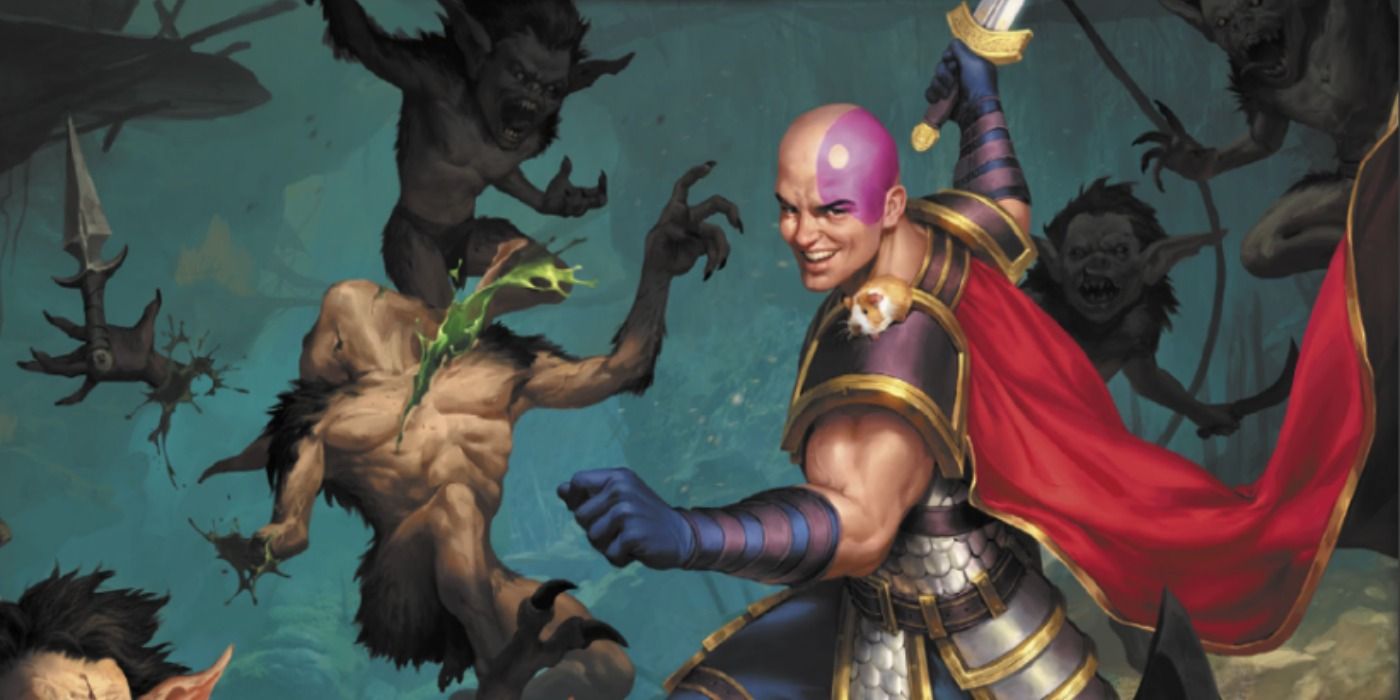
AD&Dand its 2d edition , therefore , had a unique personality , but the rules were anything but simple , as the game essentially flirt numerous disparate ruler systems into one biz . With third editionD&D , the game dropped the “ Advanced ” from the name and created a aerodynamic take onDungeons & Dragonsthat had a lasting impact on the plot , and tabletop RPGs in general . 3eD&Dintroduced the “ d20 scheme , ” a integrated machinist where nearly all checks are resolved by rolling high up on a twenty - sided dice . Thief - skills establish on centile - base checks were remove , and a unifiedD&Dskill system was added wherein any classcould take ranks in skills like Move Silently and Climb . The addition of societal skills like discreetness and Gather Information gave clearer mechanics to societal encounters than the “ chemical reaction modifier ” ofAdvanced D&D. All classes had a shared experience chart , thus would level equally , and any subspecies could pick out any class , without level limit point .
3e D&D Introduced The D20 System That Streamlined The Game And Changed Tabletop RPGs
Third editionD&Dremoved the old multi - classing and dual - classing rules , introduce a new type of multi - classing that imposing case level from family level , an approach 5eD&Dhas mirror . A fictional character could take threeD&DFighter levels and then a Wizard grade , draw them a Fighter 3 / Wizard 1 , but a level 4 persona overall , think their next degree would require the same amount of experience as a pure paladin going from Fighter 4 to Fighter 5 . graphic symbol - level based advancement was introduced as well , let in Feats and boost to base power scores .
Many other elements were unite in 3eD&D , as Clerics , Wizards , and other “ full spellcasters ” advance at the same progression from spell level 1 to 9 . The kits of 2eAD&Dwere replaced by “ prestigiousness classes , ” specialized class that had specific requirement of effort , skills , proficiencies , or other power , to qualify for . The listing of carry through throw was couple down tothree in 3eD&D , Fortitude , Reflex , and Will , abandoning overly specific type such as “ Breath Weapon . ” Although 3eD&Dwas complex , coming off the legion incongruous systems of 2eAD&D , it seemed remarkably streamlined in comparison . The introduction of a shared skill organisation for all classes , and a general machinist of high-pitched ringlet on a d20 , have rest in every iteration ofD&Dthat keep an eye on .
have-to doe with : D&D : Just Who Is Mordenkainen ( & Why Does He Keep acquire Books ? )
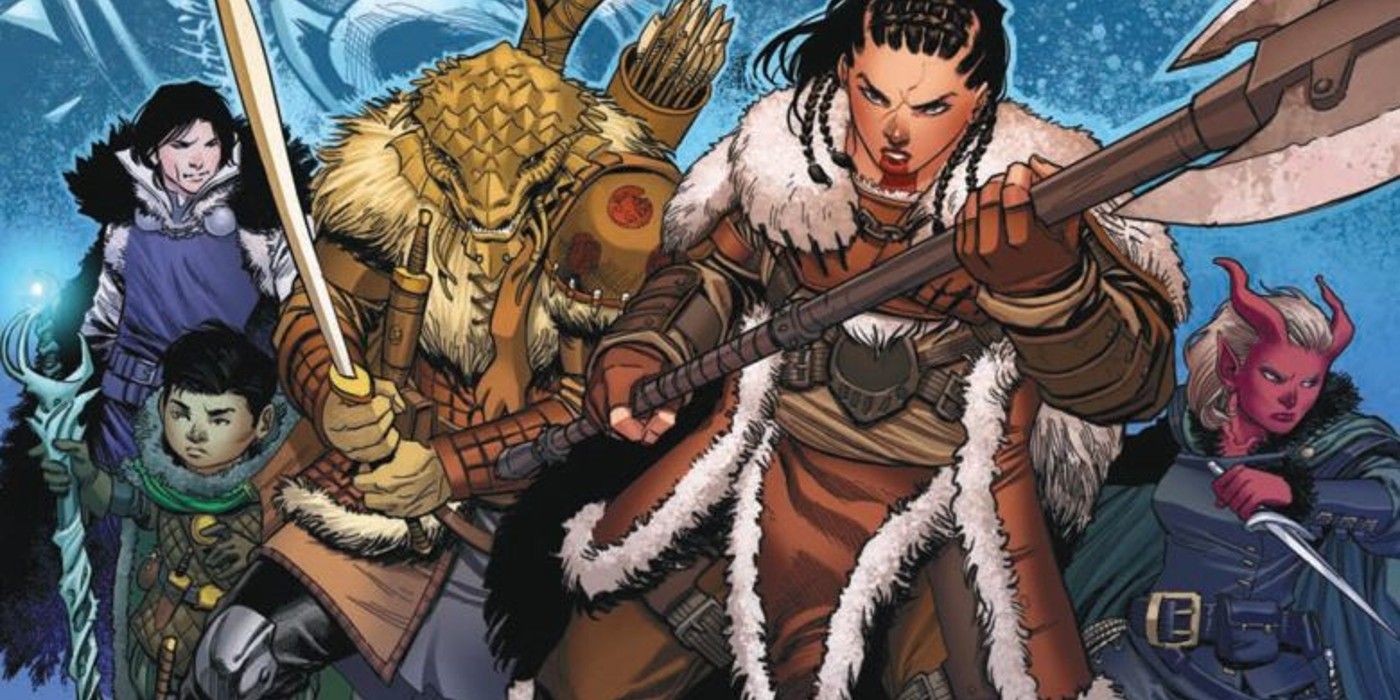
With 4eD&D , the game saw a drastic release from some of the rules that D&D had maintained sinceOD&D. As a solution , D&D’sfourth edition provided arguably the richestand most rewarding system for tactical fantasy combat ever create for a tabletop RPG , but for some player , the change were too much . The game ’s grease monkey were more integrated than ever , as each grade gained “ powers ” in an identical progression . These were divide between At Will , Encounter , and Daily abilities , a young concept for the biz , as patch and special abilities previously tend to have a specific number of function per day in early version .
4e Acknowledged Character Roles, Tiers Of Play, And Further Unified D&D’s Rules
The concept of “ use ” was insert to the mechanics , a notion that was already present at many tables when discussing party counterweight in prior editions , now codify in 4eD&D’srules . hitter were build up for high single - fair game damage , typically . D&D4e ’s Defenders , acted as the chemical group ’s cooler , penalise enemy who target weaker party members . Leaders were the healers , also offering a multifariousness of devotee and extra attacks in some sheath . controller focused on debuffs and area - burden damage , peculiarly utile for off “ minion ” enemy , a new monster character with 1 Hit Point . These four roles covered a variety of classes , as protector let in the iconic belligerent as well as the teleporting Swordmage , and leaders could be a Cleric healing with divine intervention , or a Warlord supply the same through martial inspiration .
The same three saving throw from 3eD&Dwere keep in 4e , with the unique twist that they were no longer cast by the defender . Fortitude , Reflex , and Will were instead Defenses , like Armor Class , and attack could be made against any of these four defenses , depending on the power in inquiry . Multiclassing against shifted inD&D4e , as characters could no longer freely convert classes with each stage but could or else take feats to learn powers from a different class list . With enough multi - class exploit gain , a character could “ Paragon Multiclass ” in stead of selecting a Paragon Path , the 4eD&Danswer to Kits and Prestige Classes . 4eD&Dalso formally acknowledged the tier of play , and extended the stage terminus ad quem from 20 , the pileus inAD&D1e through 3eD&D , to 30 . The first ten levels were dubbed the “ Heroic Tier , ” 11 - 20 the “ Paragon Tier , ” and the last ten level as the “ Epic Tier . ” 4eD&Dalso innovate the mind of a “ short rest , ” a five - second fracture where the Hero of Alexandria can catch their breath , reload Encounter tycoon in the cognitive operation , and ego - healing through expending Healing Surges , if needed .
With 5eD&D , its current edition , and the most financially successful version ofD&Dwith its best class ever in 2020 , the designers fundamentally married elements of 3e and 4eD&D , along with the dewy-eyed linguistic rule plant the game has ever seen . The scaling inherent onslaught bonus of older editions that would nurture to as high as 15 or 20 , and the skill systems which see to it similar number spikes , were substitute by a universal “ proficiency ” system scale from +2 to +6 , which apply for any hitch a fibre is practiced in , include attacks , accomplishment bridle , and tool exercise . Creating a character became a uncomplicated matter of applying a race , a class , and a background , to find all of a hero ’s start out proficiency .

Current 5e D&D Borrows From Every Prior Edition, Including Strange Nods To Early D&D
The design of 5e include some unexpected choices , as theD&DFeat choices and ability sexual conquest bonusesof 3e and 4e were exchange by layer where a character take between a Featoran property bonus . These level were tied into class forward motion , rather than overall character level , as with 3eD&D. The spine of the plot returned to the 3eD&Dparadigm , with grapheme able to freely multi - class every level , assume attribute room access are met . The three saving stroke type of 3e and 4eD&Dwere abandoned , and now every one of the six base ability score carries its own deliverance throw , rolled by the defender .
link : Why D&D ’s Problematic Lore Is Changing
Current 5eD&Dalso feature some throwbacks toAdvanced Dungeons & Dragons . InAD&Dand its 2e variant , there were sorcerous items that would “ interchange ” a fundament stat , such as a Belt of Giant strength . In 3e these were changed to items that add a set numeral to a meanspirited stat to reward player who invested in the necessary stats for their class , rather than “ dumping ” that stat in the hope of supplant it with a magic item , and 4e did aside with stat - altering items altogether . 5eD&Dbizarrely bring back the stat “ renewal ” magic item , an element that provides an previous - schooling vibe , but remains a questionable pattern choice . As a replacement to Kits , Prestige Classes , and Paragon Paths , everyD&Dclass now pick out a sub - stratum , provide it specialization and uniqueness .
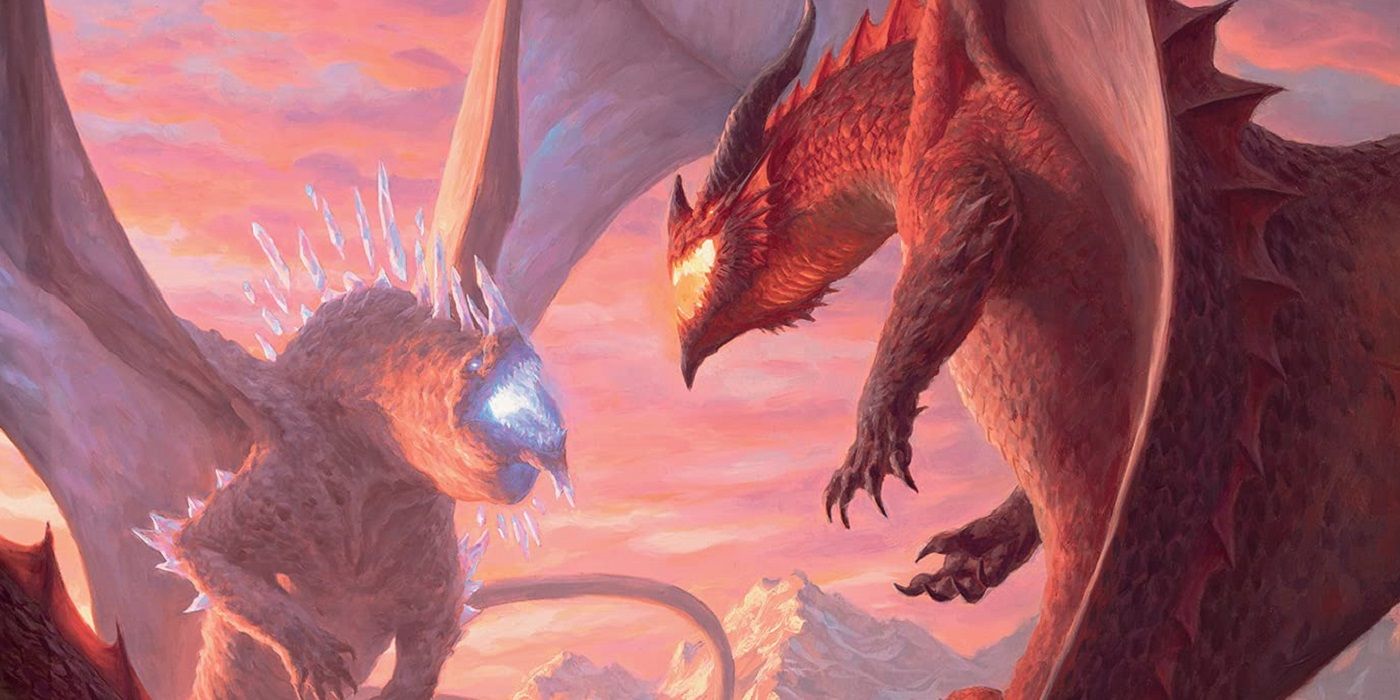
The Healing Surges of 4e were renamed Hit Dice with5e , but theD&DShort relaxation auto-mechanic remained , although the metre required was extended to one hour , making short rests difficult in high - tenseness , metre - sore scenarios . Thanks to power that reload with Short Rests as well as others call for Long Rests , the At Will / Encounter / Daily tycoon of 4e stay in 5eD&D , in a sense , alongside the spellcasting system based on a number of prepared spells per day used in 3eD&Dand early version . Unlike 4e , these are not “ unified ” in 5eD&Dclasses . paladin abilities like Action Surge reload with inadequate rests , while Barbarians have a set phone number of Rage uses per day . This lead to a scenario where some form rarely benefit from a short residuum , while others require them to function decently .
The Future Of D&D Holds Limitless Possibilities, Influenced By Decades Of Gaming History
The design of 5eD&Dmay seem far-out to some longtime devotee , as it lacks the choice afforded by 3eD&Das well as the clearness of purpose of 4eD&D. What 5eD&Dexcels at more than any other , include the earlier versions ofOD&D , is that it is easy to learn . The nub concept are intuitive , the numbers are little and less intimidating , and the “ border - accuracy ” design ensures an enemy is rarely impossible to deal with , even for less optimized character . The biz is , in a mother wit , a grab - suitcase of elements from throughout the prior 40 twelvemonth ofD&D’shistory . While not every ingredient works , it has proven popular , perhaps by regain the cherubic billet between nostalgia , functionality , and ease of entree . Each version ofDungeons & Dragonshas tote up something novel that inspired the current 5e rules , and with the 5.5D&Drevision coming in 2024 , another chapter will stretch out in the ever - acquire rules of the world ’s oldest tabletop RPG .
Next : D&D ’s Problematic Lore That Still need desexualize
